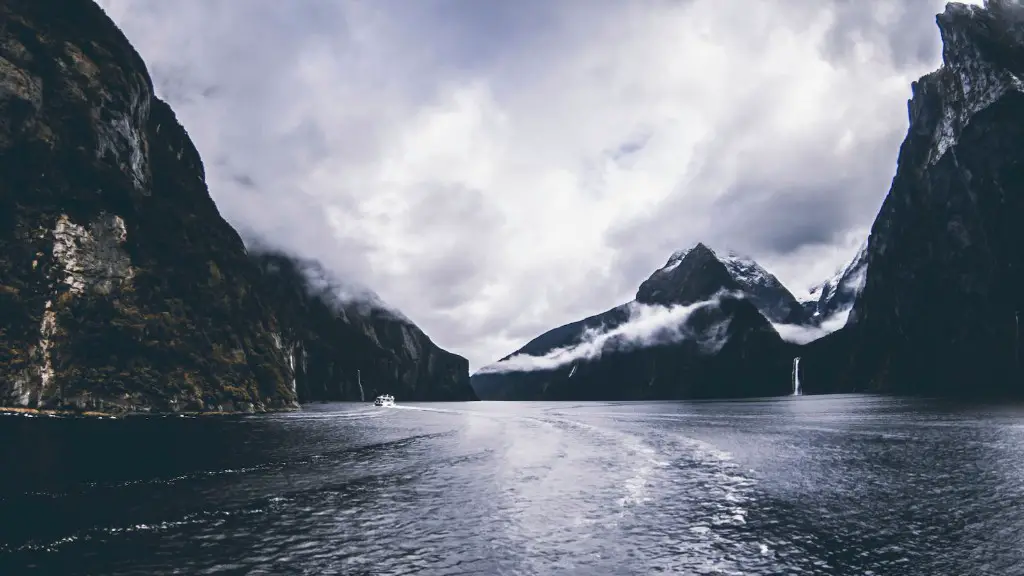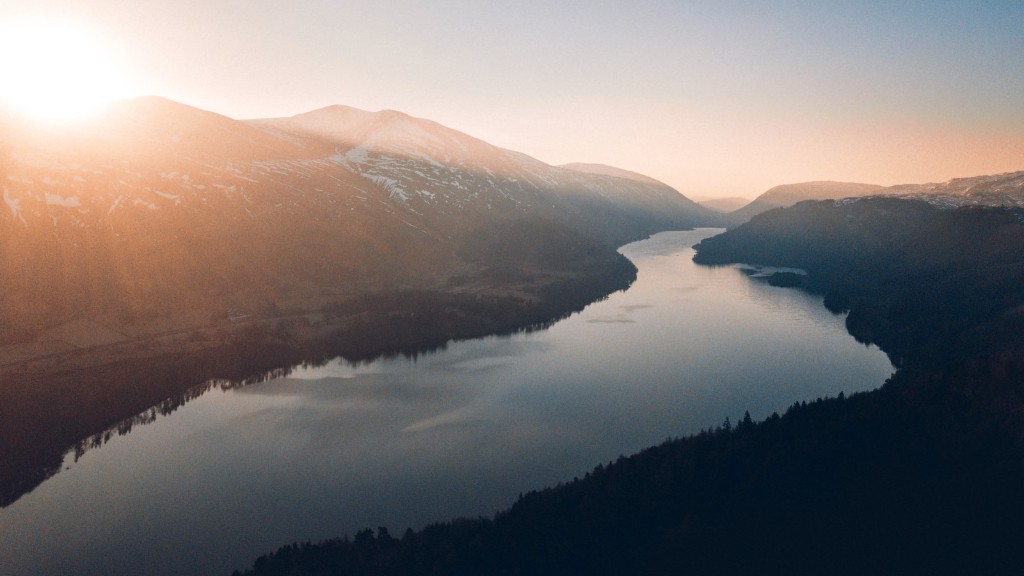The Nile is the world’s longest river stretching over 4,000 miles from Congo and Ethiopia down to the Mediterranean Sea. It has been used as a major trading route for thousands of years and continues to be an important resource for the many people living and working along its banks. With the ever-changing environment and climate conditions, the need to understand and manage the Nile’s resources has never been greater. This article will explore who uses the Nile River, the ways it is being utilized, and the effects it has on people and the environment.
The Nile River has been an important resource for the people living along its banks for thousands of years. It provides life-sustaining water for drinking, farming, and other activities. As climate change continues to put pressure on resources, the Nile is a vital source of freshwater. In addition to its use as a major transportation route between countries, it is also used for irrigation, fishing, and to generate hydroelectric power.
People living in the countries along the Nile are the main users of the river. They rely on it for drinking water, farming, transportation, and fishing. To make the most of the resources available, many countries have developed irrigation systems. Large scale irrigation has caused an increase in greenhouse gas emissions, which in turn can reduce the amount of freshwater available in the form of vapor. This has affected habitats and biodiversity, both of which are necessary for sustaining life in the region.
The effects of hydropower plants on the river’s flow have been a source of contention between countries. Hydropower plants are used to generate electricity and can have an impact on water supply, water quality, and the environment. For example, when a large dam is built, the flow of the river is reduced and this creates pressure on the environment downstream.
In order to manage the resources of the Nile more effectively, many countries are working together to create an integrated management plan. This plan will set out regulations for the responsible management of the river’s resources. This includes protecting the fragile habitats in the area as well as providing access for every country to use the river for its needs.
Experts in the field of hydrology and environment are working together to try and create a sustainable future for the Nile. They are working to establish plans that will allow for water use without disrupting the fragile ecosystems and habitats of the region. They are also looking for ways to increase the efficiency of hydroelectric power plants, preserve water resources, and ensure that water quality is kept up to a high standard.
The importance of the Nile is difficult to understate. It is an essential source of fresh water and renewable energy, and is a lifeline for both people and animals living along its banks. It is the responsibility of all of us to ensure that the river is managed responsibly so that it can continue to provide essential resources and services for generations to come.
Benefits of Nile
The Nile River provides economic benefits to the countries who utilize it. Not only does it provide a source of drinking and irrigation water, but it also provides a reliable and efficient way to transport people and goods. Its waters, combined with its location, have also made it a major hub for international trade and commerce. As a result, many countries have seen an increase in their economic growth and development thanks to the river.
The Nile also provides numerous environmental benefits. It is a major source of freshwater, which is essential for sustaining biodiversity in the region. It also helps to regulate temperatures and reduce flooding, while providing habitats to a variety of animals. Additionally, the wetlands of the river provide an important spawning ground for several fish species, allowing the local economy to benefit from fisheries.
Managing and protecting the Nile River is an important task for all stakeholders, both for people and for the environment. Governments, business, and individuals all need to work together to ensure that the river is being used in a sustainable way for the benefit of everyone. In doing so, we will ensure that its vital role in the lives of millions of people is maintained.
Threats to the Nile
The Nile River has long been threatened by unsustainable activities, including over extraction of water, pollution, and human encroachment. However, with the increasing awareness of the importance of the Nile and its resources, many countries have taken measures to address some of the most pressing issues. But there is still more work to be done.
Over extraction of water is among the most significant threats to the river. As demand for fresh water increases, more water is being taken out of the river than can be replenished. This has caused the river level to drop, leading to less water for drinking, irrigation and energy generation. In addition, it can also lead to increased salinity levels in the water, endangering fish and other aquatic life.
Pollution from agricultural runoff and industrial waste is another major threat to the river. Nutrient runoff from farm fields can cause algal blooms, which can lead to a loss of oxygen in the water and a decrease in fish and bird populations. Industrial runoff can contain heavy metals, which can harm the environment and lead to health problems in people who consume contaminated water.
Human encroachment is another issue facing the Nile River. As populations grow, so does the need for land and other resources. The construction of dams, residential development, and other projects have led to an increased amount of debris and sediment being deposited in the river. This can have a negative effect on local ecosystems, reducing water quality and affecting fish populations.
Finally, the Nile is facing the effects of climate change. Increasing temperatures and shifting weather patterns can lead to more extreme floods and droughts, which can have a major impact on the river’s resources. In addition, the melting of ice caps in the north can potentially lead to more water entering the river, leading to decreased water levels in certain sections.
Solution to the Threats
There are a number of solutions being proposed to help protect and manage the Nile River. These include increasing public awareness and education, implementing sustainable agricultural practices, and increasing investments in water storage and infrastructure. Additionally, governments are developing integrated water resource management plans designed to ensure that all countries have access to water while also protecting the environment.
The Sustainable Development Goals provide an important framework for protecting the Nile. These goals focus on the sustainable management of land, water, and energy resources, biodiversity conservation, improved access to water, and reducing water pollution. Moreover, governments are working together to create transboundary water agreements, which aim to coordinate the management of shared water resources.
In addition, many organizations are working to protect and improve the health of the Nile. For example, NGOs are working on projects to improve the water quality, introduce better agricultural practices, and increase access to clean drinking water. Local governments are also taking an active role, working to reduce pollution and implementing more sustainable land use practices.
Ultimately, the protection and management of the Nile River is the responsibility of all governments and individuals who are connected to it. By working together, we can ensure that it remains a source of life and prosperity for years to come.
Future of the Nile
The future of the Nile River is uncertain and it will depend on the decisions we make in the coming years. If we work together to protect and manage it responsibly, it can continue to provide a reliable source of water, energy, and food, as well as a chance to foster regional cooperation. However, if we do not act now we could see drastic changes to the river’s ecosystems, potentially threatening its future and the livelihoods of millions of people.
In order to ensure that the Nile remains a sustainable resource for generations to come, it is essential to continue investing in its health and development. This means increasing public awareness and education, incorporating environmentally friendly practices, and working together to coordinate the management of shared water resources. It also means taking a long-term view of the river’s health and recognizing the interconnectedness of the environment, economy and society.
The potential of the Nile is enormous, but so is the responsibility to ensure it remains sustainable. With the right investments, regulations, and partnerships, it can continue to be an essential source of life and prosperity. By doing so, we can ensure that the river remains a source of hope, security, and economic opportunity for people living and working along its banks.
Impact of Nile
The Nile has had an immense and lasting impact on the people and environment of the region. It has been a source of drinking water, transportation, and food for thousands of years. Moreover, its wetlands have provided habitats to a variety of wildlife, while its waters have helped to regulate temperatures and reduce flooding.
The river has also been a source of economic opportunity for the countries who use it. Its waters, combined with its location, have enabled it to become a hub for international trade and commerce. Its resources have also been used to generate hydroelectric power in the form of dams, allowing many countries to access renewable energy.
Unfortunately, the river has also been threatened by unsustainable activities, including over extraction of water, pollution, and human encroachment. If these issues are not properly managed and addressed, the effects could be devastating. The loss of biodiversity, destruction of habitats, and decrease in quality of water could have a serious impact on the region.
It is therefore essential that we take measures to protect and manage the Nile River responsibly. This involves taking steps to limit pollution, reduce water extraction, and reintroducing sustainable agricultural practices. It also involves working together to coordinate the management of shared water resources and developing integrated water resource management plans.
The Nile River is an essential resource for the people and environment of the region. With the right investments, regulations, and partnerships, it can continue to be a source of life and prosperity for generations to come.





